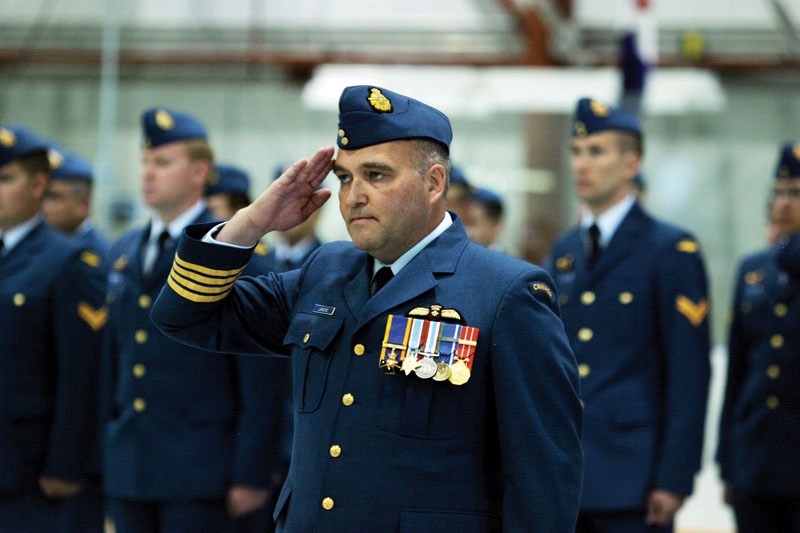The restoration of historic designations of military departments announced last week will not change the way the Canadian Forces are organized or operate, assures 4-Wing Commander Col. Patrice Laroche, after Laurie Hawn, MP for Edmonton Centre, made the announcement at 4-Wing on Tuesday.
Prior to 1968, the three services that currently make up the Canadian Forces were separate organizations, called the Canadian Army, the Royal Canadian Air Force (RCAF), and the Royal Canadian Navy. They were unified under the umbrella of the Canadian Forces after the government amended the National Defence Act, and as a result, became Land Force Command, Air Command, and Maritime Command.
“The three services were separate, kind of like what we see in the United States, where you have the air force, the army, the navy, the coast guards, and the marine corps,” explained Laroche. “They're all separate services. Everything is unified in the Canadian Forces, since 1968.”
He added he believed the reason for the change came from a desire on the Navy's side to return to the historical designation, a change which the senate has been lobbying for, for the last couple of years, and when the government decided to return the Navy to its traditional title, it decided to change the Army and Air Force as well.
“It's mostly historical, if anything,” he explained. “It's traditional. It doesn't change anything in the way we're organized other than to discontinue the commands that were created in 1968 – Air Command, Land Command, and Maritime Command. We're going back to the old designations. Other than that, the command relationships, how we structure ourselves, everything else, doesn't change.”
He added though it will not change the organization and operation of the newly renamed RCAF, it is still an important step.
“It doesn't hurt anything because we won't change our organization, but it does link us back to our heritage and our traditions, and that's a big, important part of the military,” he said.
There were some important distinctions between the RCAF prior to 1968 and the new one, he added.
“It's RCAF, but it's not the RCAF of old,” he said. “It's not at all the way the RCAF was structured. It's still Air Command, just called RCAF. It's still unified, we're still together, it's still the same organization. Let's call it RCAF, version 2.0. That one was unilingual. This one is bilingual. The previous one was separate from the other services, now we're all still under the same Canadian Forces. So in a sense, it's a rebranding for historical and traditional purposes, and for morale values.”



